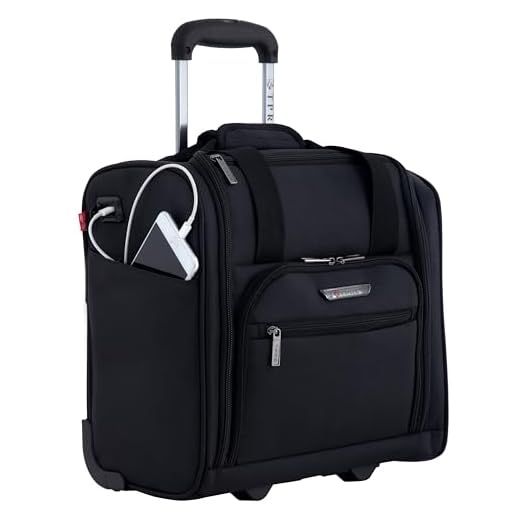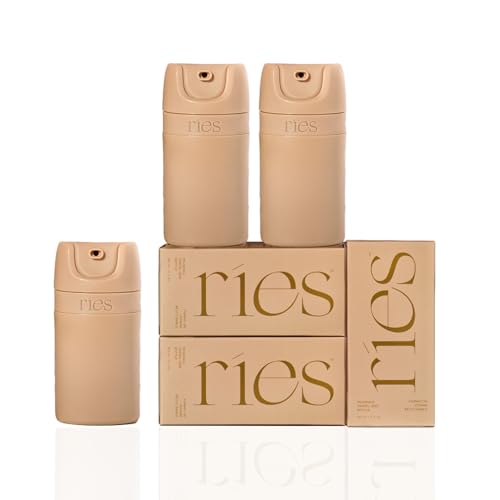



Recommendation: Need a fixed cargo rack? Choose an SUV, minivan, or book the “XL” vehicle type; compact and economy sedans rarely include built-in racks and usually provide only trunk space to stow suitcases.
Typical trunk volumes: compact sedans 300–400 L (fits 1 large suitcase + 1 carry-on), midsize sedans 400–500 L (2 large), full-size sedans 500–600 L (3 large), small SUVs 500–700 L (3 large + 1–2 carry-ons), midsize SUVs 700–1,000 L (4+ large), minivans 1,000–1,400 L (5–7 large). A standard large checked suitcase measures roughly 70–76 x 45–50 x 28–32 cm, volume about 90–110 L; use these figures to match bag count against vehicle trunk volume.
Roof-mounted carriers or aftermarket racks are uncommon on ride-hailing vehicles because many drivers avoid external carriers due to insurance limits and company rules. If transporting more than four large suitcases, select a cargo van or a dedicated airport shuttle, or arrange a private transfer with guaranteed cargo capacity; expect fares to rise 20–60% compared with base economy pricing.
Before booking: measure suitcase dimensions, count hard-shell items, request driver confirmation via app messaging, choose vehicle class that lists passenger and bag capacity, pack a soft duffel to squeeze into leftover gaps, and consider shipping oversized items via courier when counts exceed vehicle capacity.
Do ride-hailing vehicles include baggage racks?
Select an XL, SUV, or minivan option when transporting multiple suitcases; these body types typically offer the largest cargo volumes. Typical trunk/cargo volumes: compact sedans ~350–450 L, midsize sedans ~450–550 L, crossover SUVs 500–800 L, full‑size SUVs 700–1,200 L, minivans 800–1,500 L with rear seats folded. Expected checked-bag capacity: compact 1–2, midsize 2–3, SUVs 3–5, minivans 5–8.
Roof rails or cargo boxes are uncommon among regular drivers. If rooftop carry is required, message the driver before pickup to confirm presence of rails or a carrier and agree on any additional charge. At airports, choose the larger vehicle class shown in the app to match baggage volume and request assistance at pickup.
Loading tips: place heavy cases low in the trunk area or behind rear seats, secure items with straps or seat belts to prevent shifting, and keep rearward visibility clear. If one vehicle cannot accommodate all items, reserve a minivan or request a second vehicle rather than overfilling.
Tipping guidance: US$2–5 per large bag is a common range in many cities; adjust up where local norms or handling effort are greater. If planning late travel with alcohol involved, see this resource: can red wine help you sleep.
How to check trunk dimensions and seat-fold capability before requesting a ride
Measure each bag (L × W × H in cm) and compare those numbers to the vehicle model’s cargo volume and trunk aperture listed in the app or on manufacturer pages; if total bag volume exceeds the published cargo liters or any single bag length exceeds trunk floor length, choose a larger vehicle class.
Practical steps
1) Measure: note exact external dimensions for every suitcase or box. Example sizes: carry-on 56×35×23 cm (~45 L), checked 76×50×32 cm (~122 L). Add volumes for total required capacity.
2) Identify model: when the app shows make/model, search “[make model] trunk volume liters” and “[make model] trunk dimensions cm” on manufacturer/spec sites or car-review pages. Typical ranges: small hatch 250–350 L, compact sedan 350–450 L, midsize sedan 450–550 L, small crossover 450–650 L, midsize SUV 600–800 L, with seats down often 1,200–1,800 L.
3) Check aperture and floor length: published cargo liters don’t reveal opening constraints. Expect trunk floor length (rear seat back to lip) roughly: small sedan 90–105 cm, midsize 100–115 cm, SUV 110–140 cm; aperture width commonly 90–120 cm, height 40–55 cm. If any bag length > floor length, that bag likely must be angled or placed folded in cabin.
4) Verify rear-seat folding: search “[make model] split-fold rear seats” or look for “60/40”, “40/20/40” or “flat-fold” wording. Flat-folding rear backs add ~20–40 cm usable length versus non-flat designs; a centre pass-through (ski hatch) adds options for long items.
5) Contact the driver via the app message before booking if specs are unclear: provide bag dimensions and ask whether rear seats fold flat or if trunk opening fits X cm length. Example message: “I’m carrying two suitcases 76×50×32 cm each; will rear seats fold flat and chest fit length 76 cm?”
Packing and booking rules
If total bag volume > published cargo liters or any bag length approaches trunk floor length, select a larger vehicle class (XL/SUV/Premium) in the app. Pack upright when trunk height exceeds bag height and stack by footprint to maximize space. At pickup, confirm fit before the door closes and be prepared to request a larger vehicle if loading is tight.
Vehicle types that carry 1–3 large suitcases without extra gear
Choose a compact crossover or an XL/minivan option to transport 1–3 large suitcases without additional racks or crates.
Sedans: trunks roughly 13–17 cu ft – practical capacity is 1–2 large checked suitcases (28–30 in). Typical examples and approximate volumes: Toyota Corolla ~13 cu ft, Honda Civic ~15 cu ft, Honda Accord ~16–17 cu ft.
Compact crossovers and hatchbacks: cargo behind rear seats usually 25–40 cu ft, which accommodates 2 large suitcases plus a carry-on, or 3 large suitcases when bags are soft-sided or loaded sideways. Common models: Honda CR‑V ~39 cu ft, Toyota RAV4 ~37–38 cu ft, Nissan Rogue ~36 cu ft.
Full‑size SUVs and minivans: available cargo expands to roughly 60–100+ cu ft with seats folded or stowed, enabling comfortable transport of 3 large suitcases with space remaining for smaller bags. Typical examples: Chevrolet Suburban, Ford Expedition, Chrysler Pacifica, Honda Odyssey (cargo often exceeds ~70 cu ft when configured for maximum space).
Packing and loading tips: place hard-sided suitcases upright then stack smaller items on top; rotate one suitcase 90° to exploit extra width when needed; prefer soft duffels when cabin carry is acceptable since they compress and save space.
Booking advice: select the XL, SUV or minivan ride option when three large checked bags are expected; send the driver a brief message via the app with bag count and an approximate largest-dimension measurement (height × width × depth) to confirm fit.
How to ask the driver about trunk, roof rack, and rear cargo area
Contact the driver before pickup with a concise message listing bag count, approximate dimensions, and preferred storage location (trunk, roof rack, rear cargo); request explicit permission and agree on loading method.
App message – short: “Hi, carrying 2 large suitcases (28×20×12 in each). Is trunk space sufficient or are roof rails available? Thanks.”
App message – detailed: “Pickup 15:00. Carrying 3 medium suitcases plus one duffel (approx total 120×50×40 cm). Are roof rails usable, and are crossbars plus straps available? I can assist with loading.”
In-person phrase: “May I place these two suitcases in your trunk? If roof rails work, would you like me to load and strap them, or should smaller items go inside the cabin?”
Timing: send the message when the ride is confirmed or call immediately after acceptance; reconfirm at arrival if any measurements or quantities changed to avoid surprises at the curb.
Roof-rail checklist to ask about: maximum roof load, presence of crossbars, available tie-down points, and whether the driver is willing to secure items. Typical passenger vehicles list roof limits roughly 75–165 lb (34–75 kg); compact models trend toward the lower end.
Etiquette and safety: offer to help lift and secure items, bring your own straps or soft bags that compress, and offer a modest cash tip if the driver assists. If the driver declines, book a larger vehicle type or arrange a transfer service with dedicated cargo capacity.
Immediate alternatives when your suitcases won’t fit: booking tips and local services
If your bags won’t fit, book a same-day courier or secure short-term storage right away.
Booking tips
- Schedule a pickup 30–60 minutes before you need to depart to guarantee a larger vehicle option shown in the app.
- Enter exact bag dimensions (length × width × height) in the trip notes and include total piece count; drivers accept clear measurements faster than estimates.
- Prepay or add a tip in advance when the app allows; drivers are more willing to help with loading when compensation is visible.
- When an app option is limited, switch to a marketplace that lists private vans or couriers by capacity and price.
- If time permits, reserve a small cargo van via hourly rental apps or local truck rental desks; typical short-term rates: $25–$60/hr plus mileage.
Local service options
- Same-day city courier (examples: FedEx SameDay, local express couriers): intra-city delivery $25–$150 depending on distance and weight; door-to-door runs often complete within 2–6 hours.
- On-demand parcel services and bike couriers in dense urban areas: ideal for 1–2 medium bags, typical fee $10–$50 and rapid pickup under 90 minutes.
- Short-term storage networks (Bounce, Nannybag, LuggageHero): seats at local shops or hotels priced $5–$15 per item per day; book online and drop off within business hours.
- Airport or train-station left-baggage counters and coin lockers: rates $5–$20/day; lockers accept bags up to specified dimensions printed on unit.
- Hotel concierge storage: free if staying overnight; many hotels accept holds even when not a guest for a small fee of $5–$20.
- Parcel post or private parcel shops: next-day ground shipping typically $10–$60 inside same country; use courier pickup to avoid transit to post office.
- Specialized baggage shippers (Send My Bag, Luggage Forward): door-to-door international transit with multi-day windows; budget $60–$200 depending destination and speed.
Packing and on-scene tactics: compress textiles with vacuum bags (reduce volume 40–60%), swap rigid suitcases to soft duffels, split weight into backpacks, remove wheels or collapse handles to save 2–4 inches. Consider a garment bag like best luggage bag for suit and clothes when transporting suits and delicate apparel.







